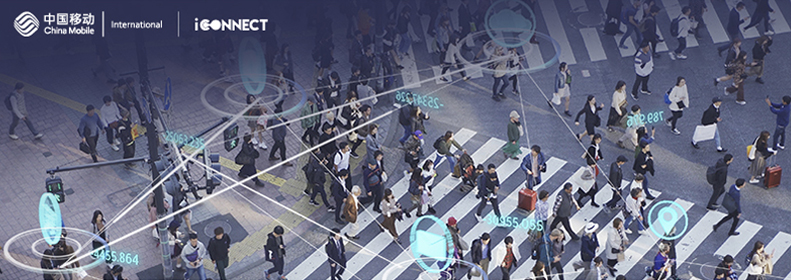
Close to 70% of the global population are expected to live in urban areas by 2050, up from more than 50% today. The smart city promises to improve life quality for these billions of city dwellers and to make society more efficient, sustainable and prosperous. Safety and security are at the heart of this promise.
With the rollout of 5G, cities can now use new technologies to make large-scale public events and crowded areas safer and more welcoming for all citizens. Artificial intelligence (AI), the Internet of Things (IoT), the cloud, big data and edge computing are coming together to enable new use cases, but more collaborations will continue to be required. China Mobile believes that smart cities should be built to meet the needs of citizens and that requires service providers, enterprises and governments working together.
Smart event security for vibrant city life
Ensuring safety takes a massive, well-coordinated effort based on information and communication. From regular sports fixtures, cultural and religious events to major events and global sporting spectaculars like the Olympics or FIFA World Cup, music festivals and business summits, almost are all held without incident.
In the past, security personnel on the ground would be alert for overcrowding or suspicious behaviour. They may have been supported by monitoring CCTV footage, with the hope that problems could be spotted at an early enough stage to allow intervention. As the 5G pioneer, China Mobile equips on-duty personnel with augmented reality (AR) glasses and back them up with a fleet of robots and advanced analytics, maximising opportunities to prevent problems escalating into incidents that impact people.
The power of 5G enables patrolling robots and AR glasses to collect high-definition video that is sent to the venue command centre in real time, using AI and facial recognition technology. Relevant information is then relayed back to the AR glasses of nearby security personnel, allowing them to react in a timely fashion. This system can be used to rapidly detect and respond to incidents, such as:
A smart event security platform relies on an efficient 5G network, with high bandwidth, low latency, and wide coverage, as well as IoT devices, including smart glasses and robots China Mobile provides event organizers and venues with a one-stop solutions with its 5G connectivity. Video and images are analysed in real-time in the cloud, taking advantage of edge computing and AI-enabled visual recognition and using blacklist and whitelist databases. High-definition, time-stamped video further provides a chain of evidence and can be reviewed to help improve processes and protocols for better public safety and security in the future.
Building on 5G capacity and capabilities
China Mobile has been building capacity for new smart cities within the paradigm of "overall city" concept. It launched a framework dubbed"1,1,3, n", which means, one cloud, one platform (one city), three services (top-level design services, security services, operations and maintenance services), and ‘n’ applications (which include urban governance, social services, industrial economy and ecological liveability).
By enhancing the digital intelligence and infrastructure, China Mobile can build an efficient, safe, stable, reliable, and leading urban digital technology system. This platform and application system can support various security applications in a smart city.
Smart security systems at venues need a reliable 5G network that enables the security platform continuously collects high-definition videos and data from IoT terminals like smart glasses, robots etc., transferring back to the platform for analysis by trained personnel. By harnessing China Mobile’s 5G technology with high bandwidth, low latency, and wide connection, as well as computer visual recognition technology, security personnel can conduct comprehensive evaluation and management of potential threats, de-escalate non-threats or quickly resolve issues.
(1) Real-time transmission of videos: High-definition video and images are sent back to the monitoring centre for detecting, identifying and analysing [target subjects] on the Cloud and edge computing
(2) AI recognition: To detect and extract characteristics on data such as faces and objects in the real-time videos, while comparing with lists of barred individuals, staff on duty or VIP databases and issue early warnings
(3) Emergency command: With 5G facilitating the instant transfer of live images to the command control centre through AR smart glasses and intelligent robots, security teams can promptly initiate in situ deployment and security assurance through people and smart technology
Smart crowd management
Similar technologies can also be deployed to help manage crowds at transport hubs, hospitals or shopping districts and to supplement the efforts of first responders in an emergency, such as a natural disaster or major incident.
Mobile crowd monitoring and security management equipment, such as patrol robots and drones, can be moved to an area where a crowd is anticipated or gathering. Face detection technology can be used to estimate crowd density and predict wait times. This means that personnel can be dispatched to the site to redirect pedestrian traffic before the site’s capacity is reached.
5G communications ensure that security personnel stay in constant contact with their command centre and with one another, with no latency, even within a large crowd where many people are using mobile devices. When facial recognition technology is also deployed, this allows security personnel to be directed to go to the aid of specific people in crowd, such as those who are vulnerable due to age or mobility issues.
Incident prevention is important in all crowd situations. If this is not possible, then identifying potential danger at the earliest stage and meeting it with an appropriate response is better. 5G and IoT-enabled smart systems for managing events and crowds give venue security and public emergency services teams this ability and will help make our cities safer in the future.